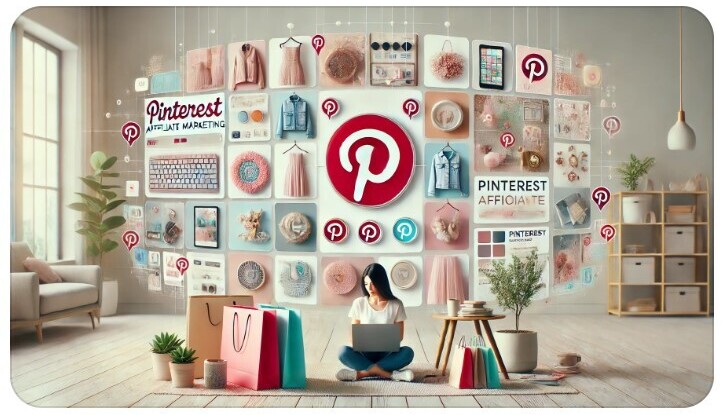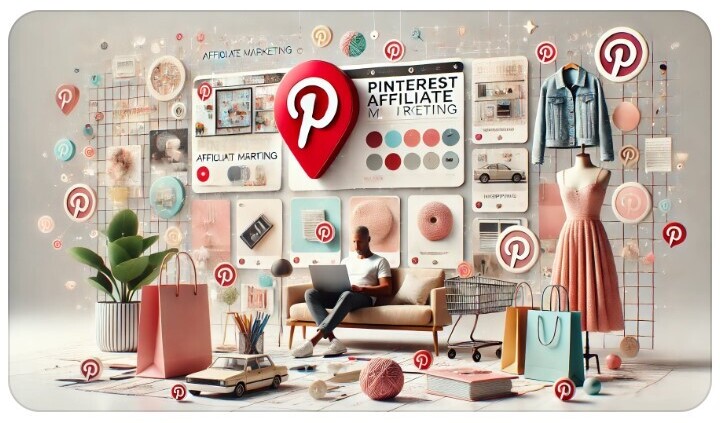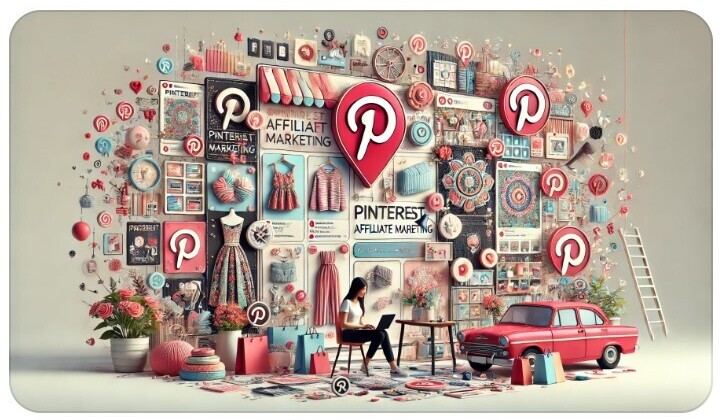
Pinterest affiliate marketing, huh? It’s this cool way folks are using Pinterest to share products they love and earn some cash while they’re at it. At its core, it’s all about promoting products you believe in by sharing affiliate links through pins. When people click through and make a purchase, you get a commission. Easy, right?
Now, what makes Pinterest a bit unique in this game is its visual nature. Unlike your typical social media feeds filled with text-heavy posts, Pinterest is all about stunning visuals and creative content.
It’s an image-first platform where users come to find inspiration, plan their purchases, and discover new ideas. That means your marketing efforts need to be more creative and visually appealing. Forget plain old ads; think of each pin as a mini-billboard for your affiliate products.
What’s awesome about Pinterest affiliate marketing is its potential. People on Pinterest aren’t just browsing; they’re often planning or about to make a purchase, which makes them more likely to click on your affiliate link and buy.
It’s this ready-to-buy mindset that can make Pinterest a goldmine for affiliate marketers and businesses looking to reach a motivated audience.
Setting Up for Success on Pinterest
Nailing your Pinterest profile is a must if you’re diving into affiliate marketing. The key is making sure your profile looks slick and inviting. Use bright, captivating images, and make sure your bio tells folks exactly what you’re about and why your pins are a must-see.
Choosing the right affiliate programs isn’t just about the payouts. It’s about what fits well with your niche and audience. Sure, high commissions are tempting, but if the products don’t speak to your followers, you’re not going to see much success. Go for authenticity over quick bucks.
Understanding your audience on Pinterest is like having a secret weapon. People use Pinterest for a reason: they’re either planning to do or buying something. Get to know who’s checking out your pins, what they’re pinning, and when they’re active. This way, you can tailor your strategy to make sure your pins land front and center during peak browsing times.

Creating Compelling and Shareable Content
It’s all about the content when it comes to Pinterest. Crafting a killer content strategy isn’t just a good idea it’s absolutely essential. Your pins need to be visually striking to capture attention in that bustling feed of images. Think of your pin as a window display; it’s gotta be eye-catching!
Creating pins that people actually want to share means getting creative. Incorporate elements like bold colors, clear layouts, and easy-to-read fonts. Don’t shy away from experimenting with different formats either—infographics, videos, and even short narratives can keep things fresh and engaging.
Successful boards are all about providing value. Whether it’s DIY tips, product reviews, or how-tos, make sure your content gives viewers something they need. When folks find your boards helpful or inspiring, they will likely click through to your affiliate links.
Storytelling on Pinterest? You bet. Every brand or product has a story; if you can tell it right, you’ll draw people in. Make sure each pin tells its own little story, showing why the product is useful or inspiring.
Optimization Techniques for Increased Visibility
Getting your pins noticed on Pinterest takes a bit more than just hitting ‘Post’ and hoping for the best. Optimizing your pin titles with the right keywords is a game-changer. Think about what your audience might be searching for and weave those words into your titles. This way, your pins have a better shot at popping up in search results.
Hashtags aren’t just for Twitter and Instagram. On Pinterest, they’re a handy tool for boosting your pin’s visibility. Use them wisely by adding a few relevant hashtags to your descriptions. It helps group your pins with similar content, making them easier to find.
Pinterest isn’t just about pretty pictures. It’s a search engine for ideas. That means Pinterest SEO is a real thing. Besides keywords and hashtags, consistent pinning schedules, engaging captions, and high-quality images all contribute to making your content more discoverable.
Play the long game: slowly but surely, you’ll see your visibility rise.

Ethical Considerations and Best Practices
Being upfront and honest is key when it comes to affiliate marketing on Pinterest. People appreciate transparency, so make sure your followers know that some of your links are affiliate links. It’s all about trust, and being clear helps build that from the get-go.
Pinterest has specific policies and guidelines for affiliate marketing, and it’s crucial to stick to them. Violating their rules could not only hurt your reputation but also get you banned from the platform. So, take a bit of time to familiarize yourself with what they allow and what they don’t.
Building trust through genuine recommendations is powerful. Don’t just push products for the sake of a sale. Align your promotions with your interests and audience needs. When you truly believe in what you’re promoting, it shows, and your community will appreciate the authenticity.

Measuring and Analyzing Success
Keeping tabs on your metrics is like having a map on this Pinterest journey. You’ll want to track key indicators like clicks, repins, and engagement rates. They give insights into which pins are rocking it and which ones could use a little tweaking.
Analytics tools are your best friends when it comes to refining your strategy. Tools like Pinterest Analytics or Google Analytics can show you what’s working and where there’s room for improvement. They can help you spot trends and understand your audience’s behavior better.
Learning from others in the game never hurts. Take a look at successful case studies or tactics from people who are crushing it with Pinterest affiliate marketing. There are always lessons to adapt and scale to fit your own strategy.
To learn more about Howard, you can check out this article.
My involvement in operating an online business started in 2014, and I did not do it alone! Online success takes hard work, perseverance, and help to learn all these things.
The industry is constantly changing, especially with the growth of Artificial Intelligence (AI) in the online world.
If you want to be taught how to create great website content and have an online business that could make you income 24/7, 365, then you may want to check out how I did it. I used this source to learn, engage with others for assistance, and create online income using multiple affiliate marketing sources.
You can also reach out to me by leaving a comment below. I will get back to you!
Can You Afford to Not Make Money Online?

